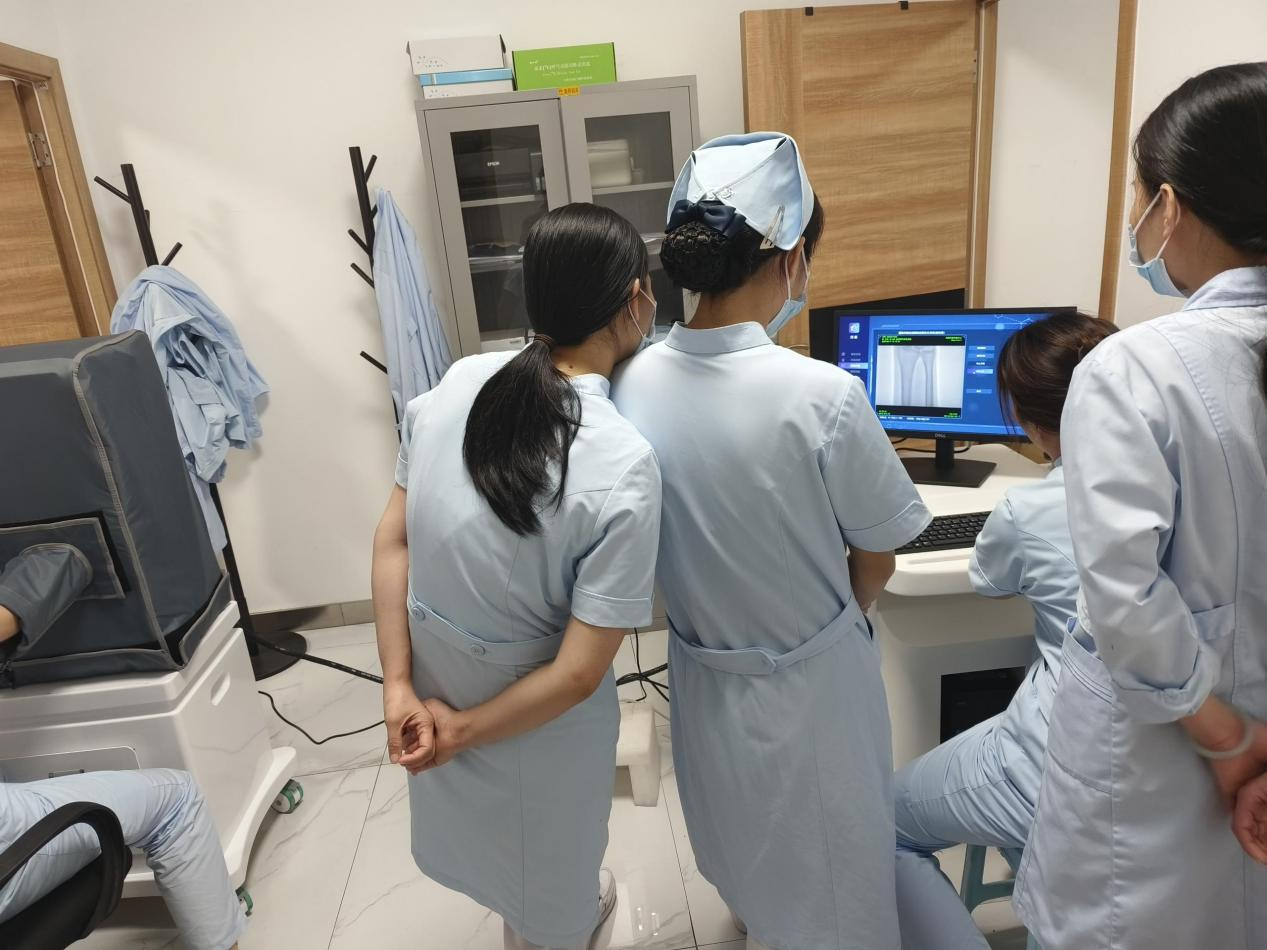In daily life, due to the decline in balance ability, the elderly often instinctively support the ground with their arms when they fall, and the distal end of the radius and ulna of the forearm is the main part that bears the impact. This “protective reflex” can buffer head injuries, but it makes the forearm a high-risk area for osteoporotic fractures. According to statistics, among people over 65 years old in China, one in every three women suffers from distal forearm fractures due to osteoporosis. Dual-energy X-ray bone density testing (DXA) selects the forearm as the measurement site precisely because of its physiological structure and clinical value.
The forearm is composed of the radius and ulna. The trabecular bone structure in the distal one-third area is special and contains a large amount of cancellous bone. This honeycomb structure is highly sensitive to changes in bone metabolism and can reflect calcium loss earlier than in the lumbar vertebrae and hips. Research has found that when the bone mass in the human body decreases by 10%, the changes in bone density of the forearm can be precisely captured by DXA, while the lumbar vertebrae and hips need to lose 15% to 20% to show abnormalities.
Clinical cases have confirmed this characteristic: A 58-year-old woman visited the doctor due to wrist pain. The DXA forearm test showed a T value of -2.3 (reduced bone mass). Based on this, the doctor initiated anti-osteoporosis treatment in advance. Three months later, the forearm T value rebounded to -1.9, successfully preventing the risk of more serious fractures.
The three major technical advantages of DXA forearm detection
Non-invasive and precise, with controllable radiation
DXA penetrates bones with dual-energy X-rays and calculates bone density based on the attenuation differences of photons of different energies. Its radiation dose is very low. When conducting a forearm examination, the patient can quickly complete the scan by placing the forearm flat on the examination table.
The selection of parts is scientific and the results are reliable
For obese patients (BMI > 30), the detection of the distal forearm can reduce X-ray scattering errors when the thickness of the forearm soft tissue is moderate. Research shows that the consistency between forearm DXA and the gold standard lumbar spine test reaches 92%.
Dynamic monitoring, a barometer of treatment
Anti-osteoporosis drugs usually prioritize improving cancellous bone density, and forearm testing can detect treatment responses at an early stage. For instance, after a patient was treated with denosumab for one year, the bone density of the forearm increased by 2.2%, providing a crucial basis for adjusting the medication regimen.
Which groups of people need to have their bone density tested?
Screening of high-risk groups
Postmenopausal women (especially those who experience early menopause
Long-term use of glucocorticoids
Has a history of brittle fractures (such as wrist or hip fractures caused by minor falls)
Patients with metabolic diseases such as hyperthyroidism and type 1 diabetes
Interpretation of Test Reports and Action Guidelines
After obtaining the DXA report, it is necessary to pay close attention to the t value (compared with the peak bone density of healthy adults) and the Z value (compared with peers of the same age) :
T value ≥-1.0: Bone density is normal, but it is still necessary to maintain a daily calcium intake of 800-1000mg and a vitamin D intake of 400-800iu
-2.5 < t value < -1.0: Reduced bone mass. It is recommended to increase weight-bearing exercises (such as brisk walking and Tai Chi), and avoid smoking and drinking
T value ≤-2.5: Osteoporosis. Anti-bone resorption drugs or bone formation promoting drugs should be used under the guidance of a doctor
Special reminder: If the forearm test reveals a t value of ≤-2.0, even if there is no history of fractures, a fall risk assessment (such as a stand-up walk test) should be conducted, and protective measures such as anti-slip shoes and bathroom handrails should be provided.
Forearm bone density testing, by accurately capturing the early changes in bone mass and combining with dynamic monitoring data, provides an objective basis for the hierarchical diagnosis and treatment of osteoporosis and the formulation of individualized medication plans.
Post time: Jul-16-2025


